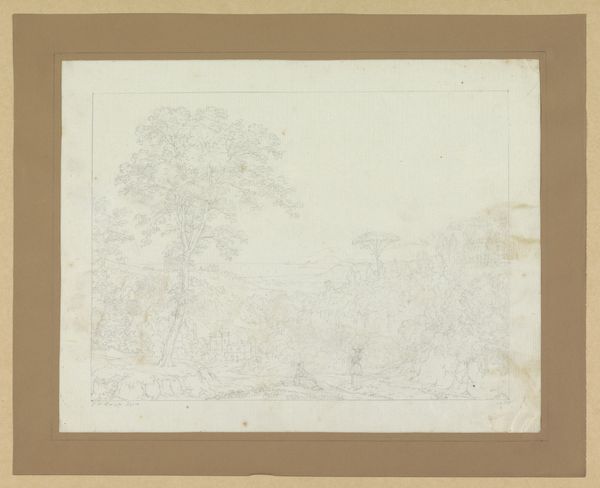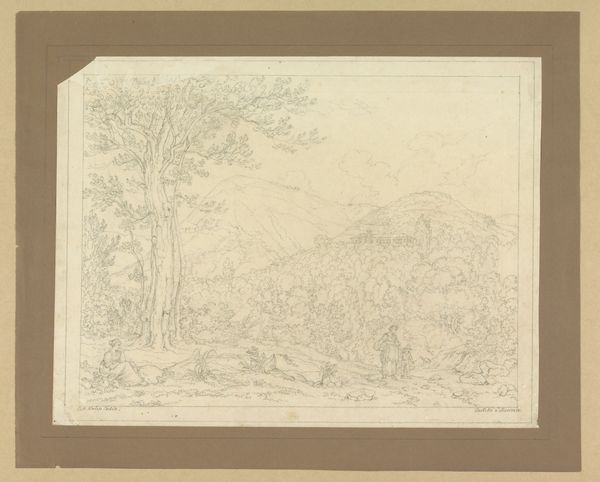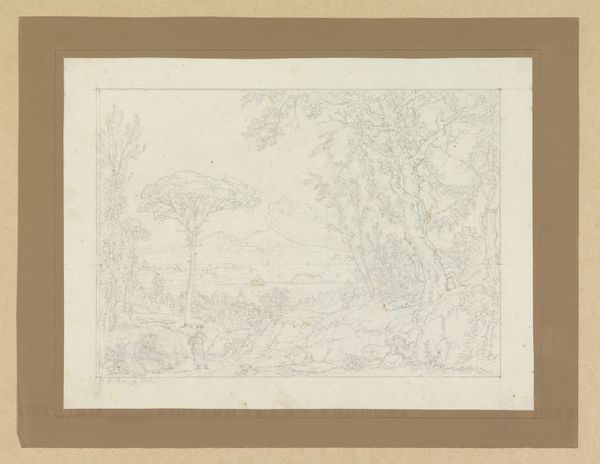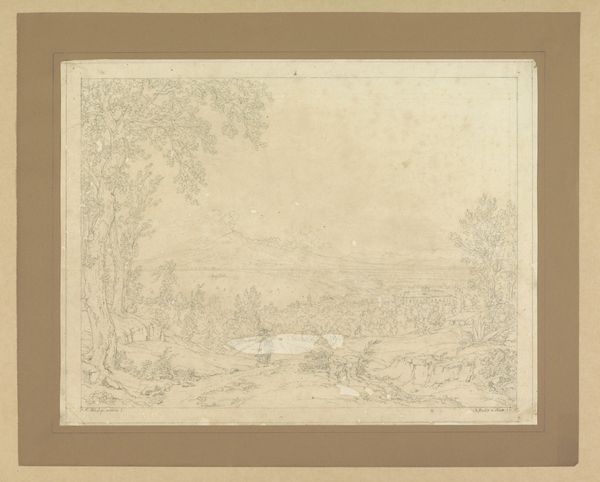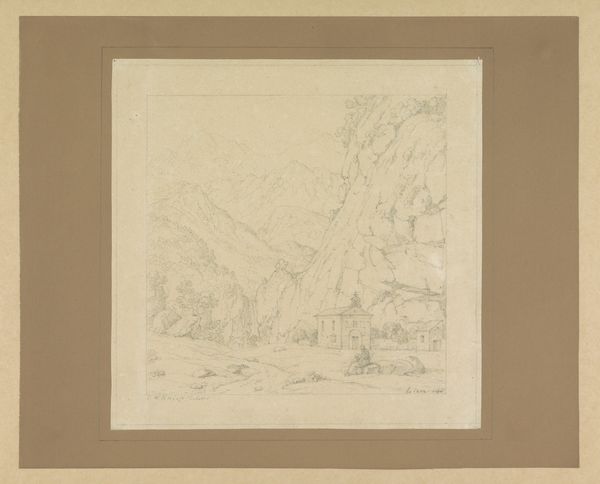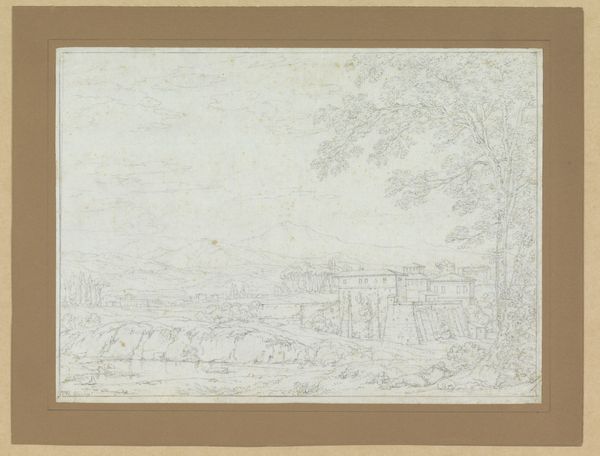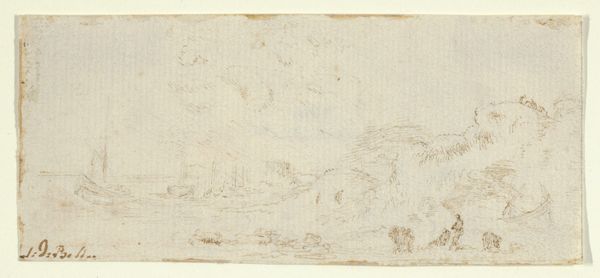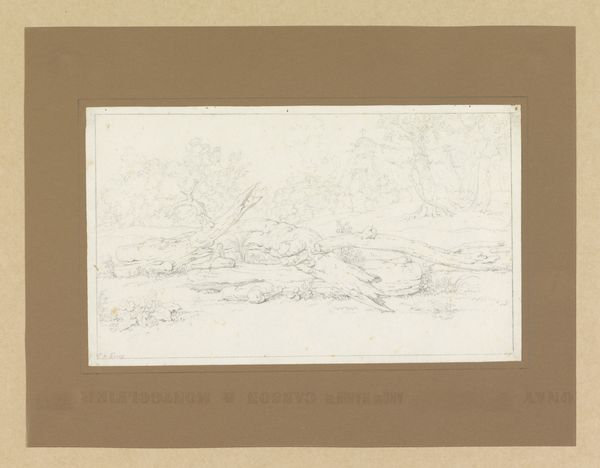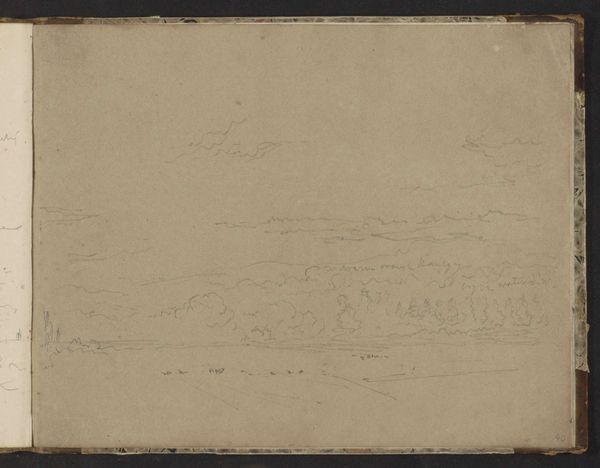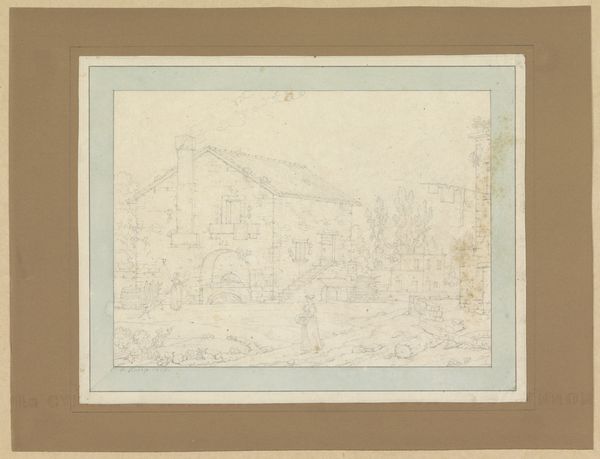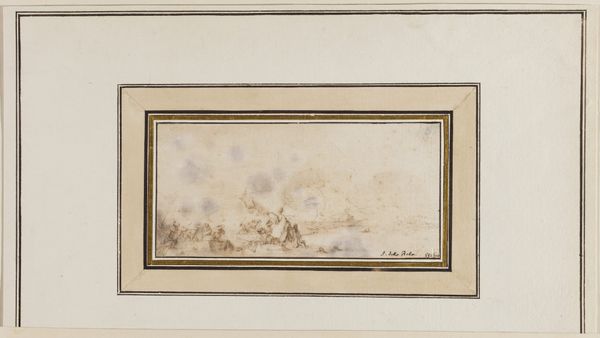
drawing, paper, pencil
#
drawing
#
landscape
#
figuration
#
paper
#
form
#
romanticism
#
mountain
#
pencil
#
line
Dimensions: height 227 mm, width 305 mm
Copyright: Rijks Museum: Open Domain
Curator: This landscape drawing, rendered in pencil on paper by Christoph Heinrich Kniep around 1820, pulls you into another world. Editor: Yes, the delicacy of the lines almost creates a sense of ethereality, like a dreamscape. But what’s fascinating to me is the inherent tension. Kniep's decision to set up this solitary figure in opposition to the seemingly impenetrable vastness of the natural world highlights human vulnerability. Curator: It's interesting you use the word 'vulnerability' – for me it feels more like quiet awe. I think of Wordsworth’s “Lines Composed a Few Miles Above Tintern Abbey.” It's the Romantic’s yearning to be immersed in the sublimity of nature, isn’t it? Editor: Absolutely. It reflects a shift away from Enlightenment rationality to valuing emotion and individual experience. The inclusion of architectural elements, like that small structure near the foreground figure or that distant building nestled higher in the landscape, points to the intrusion of culture. This also demonstrates humans shaping, yet still dwarfed by, the physical environment. Curator: It also emphasizes scale, doesn’t it? These carefully rendered lines draw the eye, inviting us to consider the relationship between the intimate and the immense. Editor: Exactly. What I appreciate about Kniep’s artistic choices is how he captures a pivotal moment in history when ideas about individual subjectivity were changing so radically, setting up discourses in which these new thoughts intersect with older understandings. He is asking what place an individual carves for himself, what space there is to be an "I". The lone traveler perhaps looking at those architectural intrusions. Curator: Maybe that solitary figure *is* the artist—us—considering the landscape, life… Editor: Right, questioning, exploring—not just gazing at nature but engaging with the complex historical forces shaping our view of it. Thanks for the insight. Curator: Thanks to you, too, for widening my view! It's far more layered than it looks at first glance, I think.
Comments
No comments
Be the first to comment and join the conversation on the ultimate creative platform.
